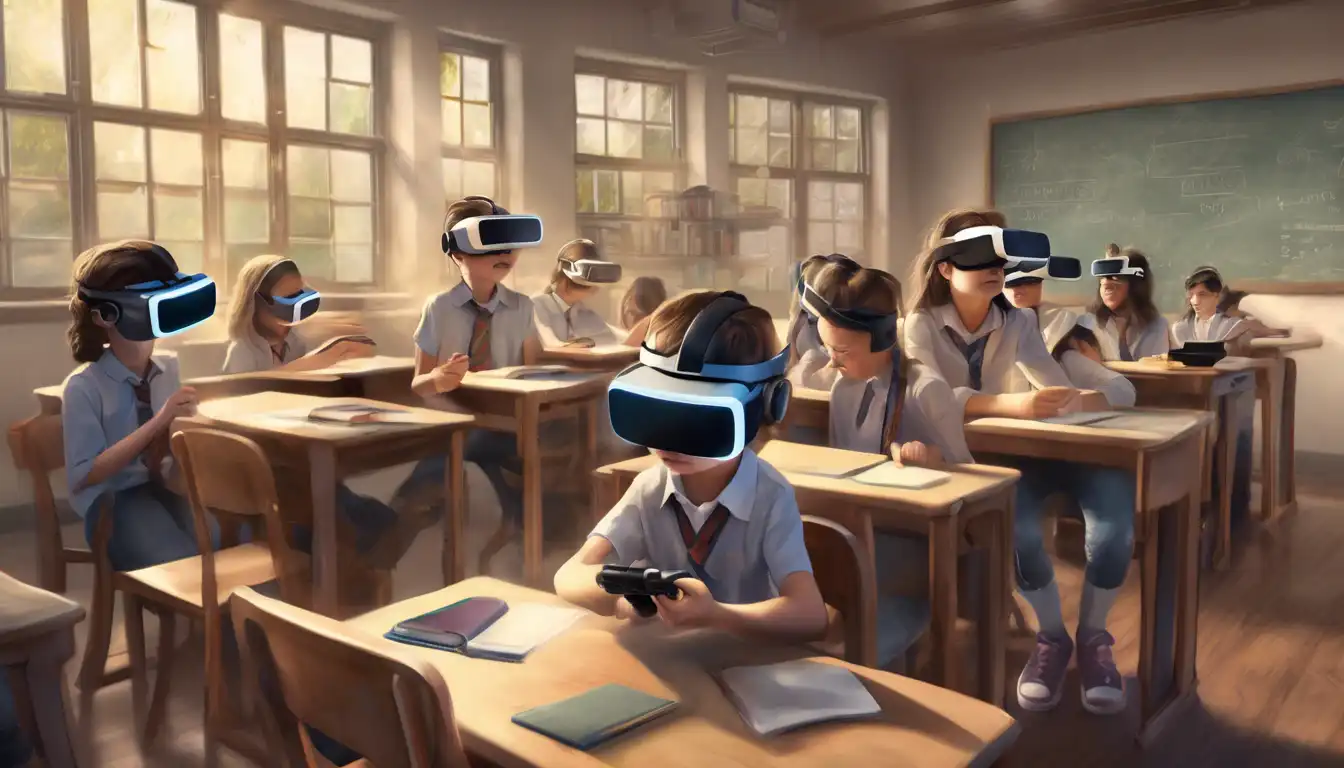The Transformative Impact of Virtual Reality in Learning Environments
Virtual Reality (VR) technology has been making waves across various sectors, and education is no exception. With its ability to create immersive and interactive learning experiences, VR holds the potential to revolutionize how knowledge is imparted and absorbed. This article delves into the myriad ways VR can enhance educational outcomes, making learning more engaging, accessible, and effective.
Immersive Learning Experiences
One of the most significant advantages of VR in education is its ability to provide immersive learning experiences. By simulating real-world environments, VR allows students to explore historical sites, dive into the human bloodstream, or even travel to outer space, all from the safety of their classroom. This level of immersion can significantly enhance understanding and retention of complex subjects.
Accessibility and Inclusivity
VR technology also promises to make education more accessible and inclusive. Students with physical disabilities or those in remote locations can benefit from virtual classrooms and field trips, ensuring that quality education is not limited by geographical or physical constraints. Furthermore, VR can cater to different learning styles, offering visual, auditory, and kinesthetic learners tailored experiences that suit their preferences.
Enhanced Engagement and Motivation
Engagement is a critical factor in the learning process, and VR has the potential to significantly boost student motivation. By transforming traditional lessons into interactive adventures, VR can make learning more enjoyable and less monotonous. This increased engagement can lead to higher attendance rates and better academic performance.
Practical Applications and Skills Development
Beyond theoretical knowledge, VR can facilitate practical skills development. Medical students, for example, can practice surgeries in a risk-free virtual environment, while engineering students can experiment with complex machinery. This hands-on approach not only enhances learning but also prepares students for real-world challenges.
Challenges and Considerations
Despite its potential, the integration of VR in education is not without challenges. High costs, technical limitations, and the need for teacher training are significant hurdles that need to be addressed. However, as technology advances and becomes more affordable, these obstacles are likely to diminish, paving the way for widespread adoption.
In conclusion, the potential of VR in education is immense. From creating immersive learning experiences to enhancing accessibility and engagement, VR can transform traditional educational paradigms. As we navigate the challenges and harness the opportunities, the future of education looks increasingly virtual and vibrant.
For more insights into innovative learning technologies, explore our EdTech Trends section.
